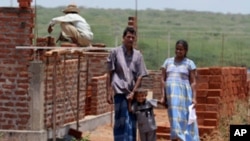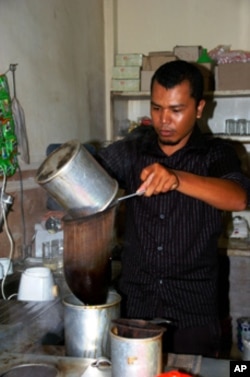Coastal areas are being rebuilt, livelihoods are returning, and life in general is improving for many of the hundreds of thousands of survivors of the 2004 Indian Ocean tsunami, according to one humanitarian organization active in recovery efforts.
Life for those survivors is better "in many, many ways," says Muhammed Musa, Director of the Asia Unit for CARE. The international aid organization has worked in region since the early days of the disaster.
Musa says CARE workers first tried to meet the critical needs of victims with food, water, medicine and shelter. Secondly, he says, CARE entered a reconstruction phase for re-locating residents and forming communities.
The last phase the CARE effort, which Musa says still continues, is giving victims the capability to make their own lives better through loans, business training and guidance in how to cope with natural disasters.
One Victim's Story
When the tsunami hit on 26 December, 2004, 21-year-old Eri Arfian and his family lived in an Indonesian coastal village. The tidal waves swept away his mother, his home and all of his possessions.
Looking to rebuild his life, Eri and his father moved into a barrack and found construction work building new homes. Eri was later able to join CARE’s Youth Project, and learned new skills from a professional chef. Today, he owns a café and catering service, living independently and earning the equivilant of $450 a month and lives independently.
“Sometimes, when lying in my bed at night, I think about my mother,” Eri says, “It is still very hard, even after five years, but I try to move on with my life.”
Scientists Work To Avert Future Disasters
Scientists are taking steps they hope will give residents living in earthquake-prone regions a better chance of surviving the next deadly tsunami. Until earthquake prediction becomes a more-exact science, however, the best they can do is to give advanced warning of an impending disaster.
In fact, a tsunami warning system, reaching from the east coast of Africa to the U.S. state of Hawaii has been installed and tested. The system acts as an earthquake early-warning system, employing high-technology deep sea buoys to pinpoint the depth and strength of movements in the sea bed.
After predictions of a possible tsunami-causing earthquake are made, the news is flashed to a network of warning centers across the region.
Testing A Tsunami Warning System
In October, the first comprehensive test of the tsunami warning system was initiated. Bulletins were sent out from the Hawaii-based Pacific Tsunami Warning System and Japan Metrological Agency for a simulated 9.2 magnitude quake and tsunami.
In an mass drill dubbed "Exercise Indian Ocean 09," sirens wailed and crowds fled in coastal areas from Indonesia to the coast of South Africa.
Planning For The Next Tsunami
In a report commissioned by the five countries hit hardest by the 2004 tsunami and presented to the United Nations earlier this year, it was recommended that involving local communities in the recovery process is as instrumental as installing high-tech early warning systems. The report also highlights the need for governments to incorporate disaster risk reduction measures in national development plans.







